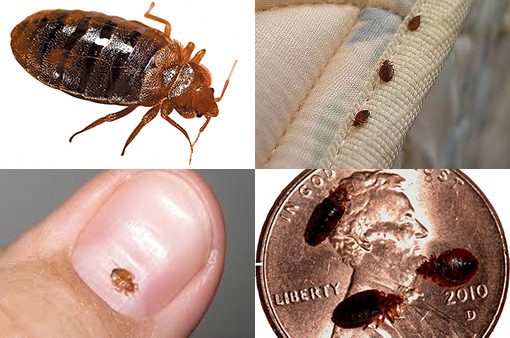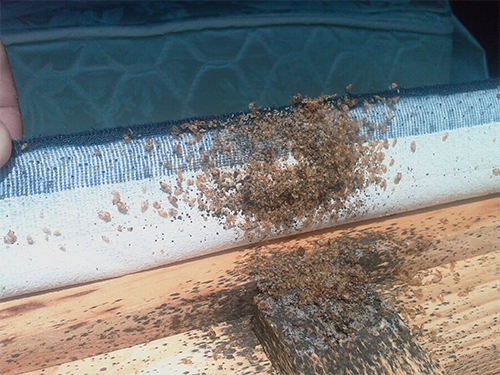Comprehensive Kings Bug Control Services Cincinnati OH
Kinds of Bug Control: Which Technique Is Right for Your Infestation?
When encountered with an insect problem, the selection of an ideal technique for parasite control is essential in properly managing the circumstance. By discovering the different kinds of parasite control methods offered, people can make informed choices customized to their unique situations, making certain a more effective and sustainable outcome in bug obliteration.
Chemical Pest Control
Chemical bug control involves making use of artificial or normally acquired chemicals to take care of and eliminate pest populaces properly. This approach is commonly utilized in agriculture, forestry, and property settings to fight a wide variety of bugs, consisting of insects, rodents, and weeds. Using chemical pesticides can offer fast and targeted options to pest invasions, making it a prominent choice for many individuals and services.
One of the vital advantages of chemical insect control is its capability to promptly remove parasites, lowering the risk of damages to crops, residential or commercial property, and human health. By utilizing details chemicals that target specific parasites, this approach can efficiently regulate invasions while lessening injury to beneficial organisms and the environment when applied properly.
Nevertheless, making use of chemical bug control also raises concerns concerning potential unfavorable effects on non-target types, water resources, and human health. It is important to follow safety and security guidelines, apply chemicals properly, and consider alternate insect control approaches to minimize these threats and make certain sustainable bug administration practices.
Biological Bug Control
Biological pest control, additionally known as biocontrol, utilizes living organisms to manage and reduce insect populations naturally. This approach takes advantage of the power of nature to manage parasites without the requirement for artificial chemicals. Biocontrol can include the intro of natural adversaries of the bug species, such as microorganisms, parasites, or killers, to subdue pest populaces. By utilizing the parasite's natural killers or virus, organic pest control provides a lasting and eco friendly option to pest administration.

Mechanical Insect Control
Utilizing physical and hand-operated approaches to handle pest populaces, mechanical insect control offers a different strategy that does not depend on the use of living microorganisms or synthetic chemicals. This approach entails making use of barriers, traps, or other gadgets to literally prevent or eliminate pests. By obstructing insect entry points or establishing catches to catch them, mechanical insect control can properly decrease infestations without introducing chemicals into the setting.
One typical instance of mechanical insect control is using mesh displays on doors and home windows to avoid bugs from going into structures. This straightforward yet effective method functions as a physical obstacle, maintaining insects out while permitting correct air flow. Additionally, devices like mousetraps, fly swatters, and ultrasonic repellents fall under the mechanical parasite control group.
While mechanical bug control approaches can be labor-intensive and need regular surveillance and maintenance, they offer a lasting and eco-friendly option for taking care of bug problems. By incorporating different mechanical strategies, residential property proprietors can create a comprehensive pest control strategy that reduces dependence on chemical pesticides.
Physical Insect Control

Some common physical parasite control approaches consist of making use of barriers such as screens or webs to avoid pest entrance, traps to catch and eliminate insects, and hand-picking to literally remove insects from plants or frameworks. Additionally, techniques like heat treatments can be used to control insects like bed termite control systems pests by elevating the temperature to levels that are lethal to the insects.
Physical insect control is specifically useful in incorporated parasite management (IPM) techniques, where numerous parasite control approaches are integrated for reliable bug administration while minimizing using chemicals. By making use of physical insect control techniques, people can efficiently resolve insect invasions with marginal environmental influence.
Integrated Insect Management
When carrying out physical bug control approaches as part of bug monitoring approaches, Integrated Bug Monitoring (IPM) becomes a comprehensive method that leverages different strategies to efficiently manage pest populaces. IPM concentrates on long-term prevention of parasites with a mix of biological, social, physical, and chemical devices tailored to particular parasite concerns. By integrating several control methods, IPM intends to minimize the reference dangers related to parasites while additionally decreasing reliance on chemical remedies.
One trick element of IPM is the emphasis on tracking and assessing pest populations to determine the most ideal control approaches. This positive technique enables very early intervention and targeted approaches, bring about a lot more reliable insect monitoring. In addition, IPM advertises eco-friendly methods by focusing on non-chemical control methods and only making use of chemicals as a last option.
Conclusion

By using the parasite's all-natural killers or microorganisms, biological pest control supplies a eco pleasant and sustainable option to pest administration. - Kings pest control cincinnati oh
Using physical and hands-on approaches to handle insect populaces, mechanical bug control provides a different method that does not depend on the usage of living organisms or synthetic chemicals.An efficient method to taking care of insect populations without counting on chemical click site or biological methods includes the use of physical bug control techniques.When implementing physical bug control methods as component of insect monitoring techniques, Integrated Parasite Administration (IPM) emerges as an extensive approach that leverages different techniques to successfully control pest populaces. Chemical parasite control includes the usage of pesticides, organic parasite control utilizes natural killers, mechanical pest control includes physical obstacles, physical pest control includes trapping or removing bugs, and incorporated pest administration incorporates multiple techniques for an all natural strategy to pest control.